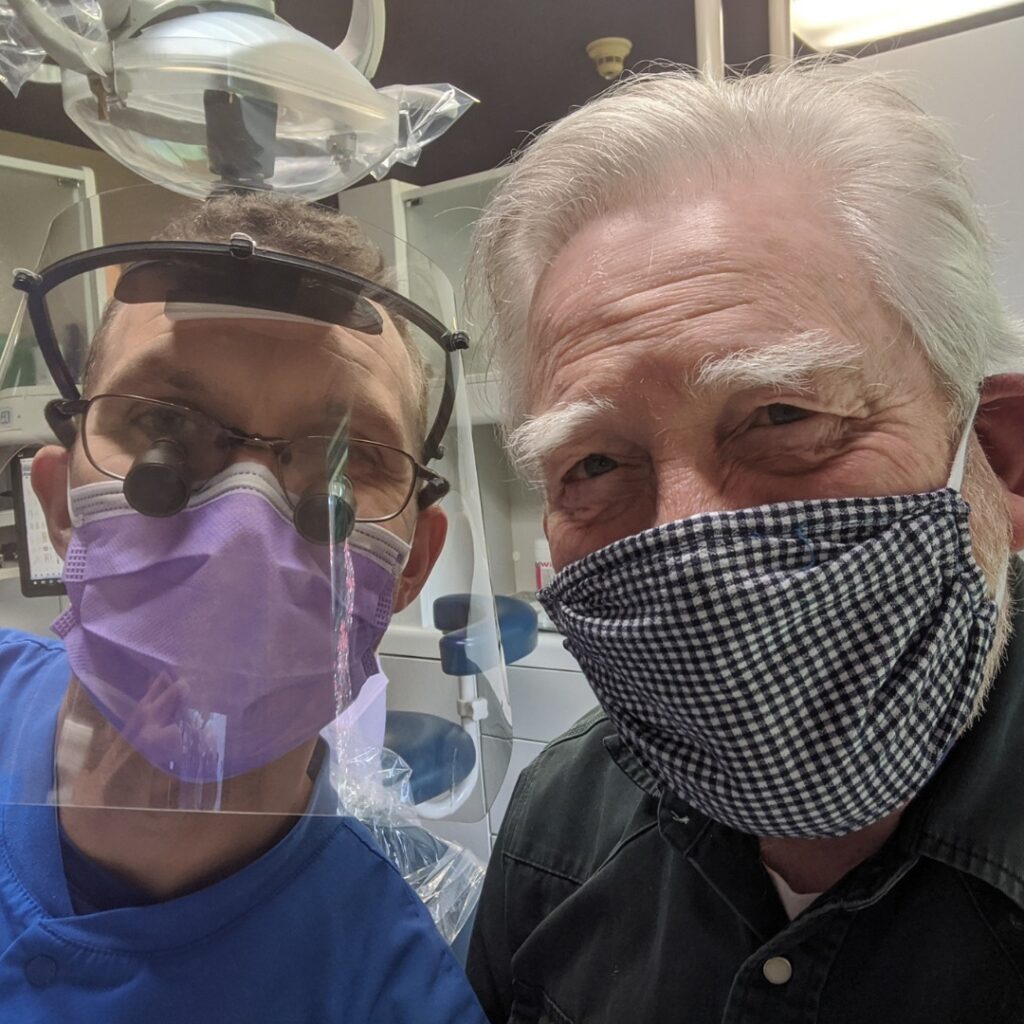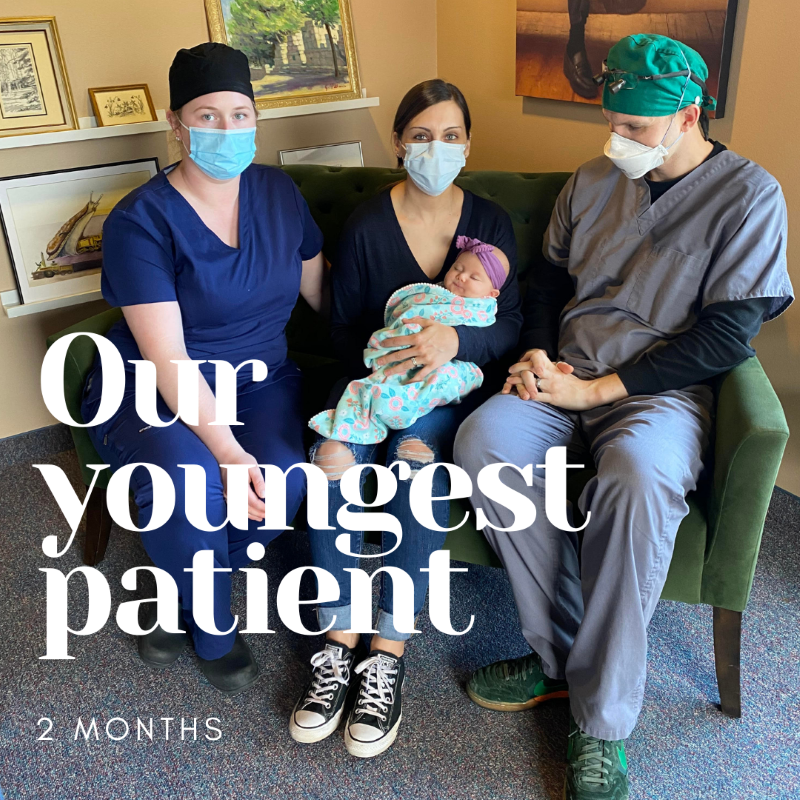I have always been driven to care for life.

Caring for life is at the core of my personal mission. Click through the following images to discover how I developed my philosophy on dentistry and long-term health.

I have always been driven to care for life.

I’ve always loved watching things grow and change. when I was a kid, I wanted a tortoise that can live to be 150 years old because I wanted something I could take care of my whole life.

I decided to become a dentist when I was in art school, for medical illustration. I’ve always enjoyed working with my hands, and science comes naturally to me.

Just out of school, I worked in a setting where I was pushed to see as many patients as possible each day. One day it was 47.

FUN FACT: I scored in the top 10 for spatial reasoning out of thousands who took the dental entrance exam in my year. This is probably why I cut a mean haircut.

When I began my own practice in McMinniville, I knew I wanted my patients to get the best of what I had to offer: artistry, great hand skills, patience, a passion for keeping people healthy, and yes, attention.

In my 9 years of practice in small-town Oregon, I’ve learned about how fulfilling it is to carve out a role for yourself in your community.

The relationships I’ve built with my patients have taught me about the inherent value of every life stage

Does it bother me how our culture talks about dentists and dentistry? My mom saves all the dental comics she comes across for me. I know that’s a thing. What bothers me is that there might be any legitimacy to those stereotypes. It’s something I push back against.

But I know this to be true: Life can proceed without too much help most of the time, but to really thrive, it needs detailed attention and loving care.
We are a full-scale general dentist serving families in Yamhill County’s longest existing dental practice. We are dedicated to extending lives through the art and science of oral healthcare and we treat patients from 0-104 years old.

When you come to Dr. Diesburg’s clinic for a cleaning, you will find yourself in the hands of our two exceptionally trained, friendly hygienists, Anna and Kaela. Regular dental cleanings are incredibly important and remove sticky, soft, bacteria-infested film that builds on teeth over time. Anna and Kaela will clean and polish your teeth, leaving them so bacteria are unable to stick to them. The process will leave your teeth feeling smooth and sparkling.
You may need a filing to repair damage to the structure of a tooth caused by decay, wear or trauma. To prepare a filling, I remove problematic tooth structure and restores it with a material such as amalgam, composite resin, or porcelain. I will also speak with you about the benefits and drawbacks of each of the possible materials.
You may need to have your teeth bonded if they are chipped or cracked. During the bonding process, I use composite resins to “glue” materials to the surface of a tooth in order to restore it. I will use an enamel-like composite material to sculpt the tooth into an aesthetic and functional shape and will contour and polish the tooth to make the crack or chip invisible.
You may need root canal therapy if you are suffering from mild or extreme tooth pain. Root canals remove infected pulp tissue within the root chamber of the tooth. The hollowed-out tooth is filled with an antibacterial filling, and the tooth is “capped” with a crown for protection. For particularly involved cases, Dr. Diesburg may refer you to one of the McMinnville-area endodontists.
I may suggest a dental crown to repair extensively decayed or damaged teeth. Dental crowns can be made of a number of materials, including gold metals, silver metals, porcelain or a combination of porcelain and metal.
Dental bridges replace missing teeth in the mouth with artificial replacements. They are composed of two crowns on the anchoring teeth and one or more artificial teeth that act as a “bridge” between the crowns. They have a number of important uses, including restoration of the smile, increasing the ability to chew and speak properly, maintaining the shape of the face, distributing force in the bite and to prevent remaining teeth from drifting out of position.
You may need a denture if you have missing teeth that cannot otherwise be restored or repaired.
Complete Dentures completely replace the teeth after the wearer’s teeth have been removed. A conventional denture is ready to be placed in the mouth about 8-12 weeks after the teeth have been removed.
Partial Dentures consist of replacement teeth attached to a pink or gum-colored plastic base. A metal framework holds the denture in place. Partial dentures are used when one or more natural teeth remain in the mouth. Partial dentures can be removed and can fill in the spaces created by missing teeth while preventing other teeth from changing position.
If I diagnose you with early gum disease, you may need treatment including tooth scaling and cleaning at three-month intervals. He will also suggest you use a medicated mouthwash and floss properly.
If your gum disease has progressed to a later stage, your treatment may include deep-plane scaling, periodontal surgery and laser surgery.
Sealants protect the surfaces of the teeth most prone to tooth decay and are applied to the chewing surfaces of the back teeth. Talk to me about whether this might be an appropriate preventative treatment for you.
When a patient suffers from dental anxiety or dental phobia, they may find the use or oral sedatives or sedation dentistry an acceptable way to get patients the care they need. I am trained in the use of nitrous oxide and can speak with you about other ways to make your visit to our clinic as comfortable as possible.
If you have teeth that are severely damaged, they might need to be removed during a process called extraction. During extraction, I will give you an anesthetic in order to numb the area where the tooth will be removed. You may need stitches, also called sutures, after the extraction. Extractions may become necessary if you are being fitted for an implant, a denture, or a bridge. I will advise you on aftercare for your mouth following the procedure.
If you’ve lost an entire tooth due to decay, genetics or injury, dental implants might be an option. These replace missing tooth roots and give you a strong foundation for fixed or removable permanent teeth. I’d be happy to talk about this option with you at your next appointment.